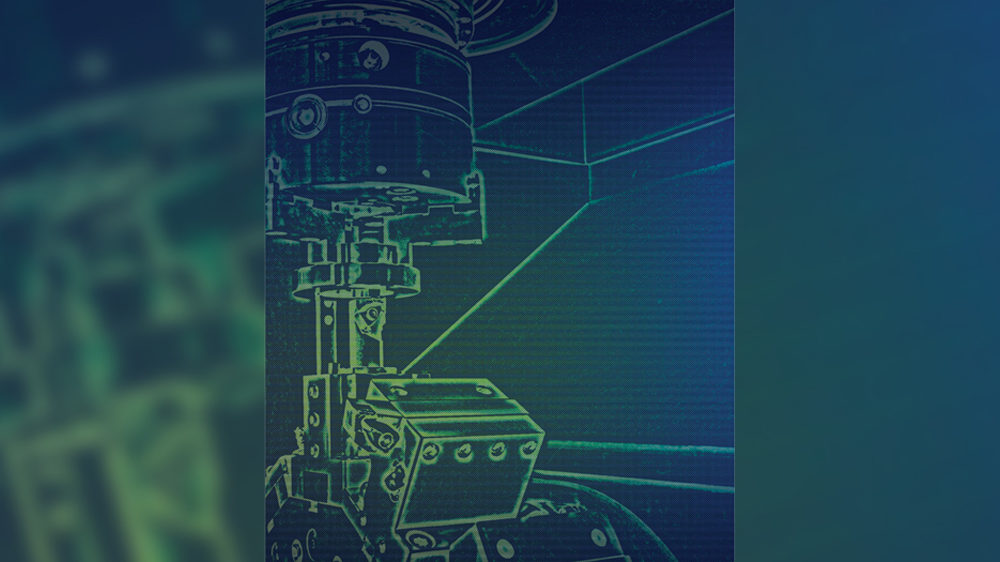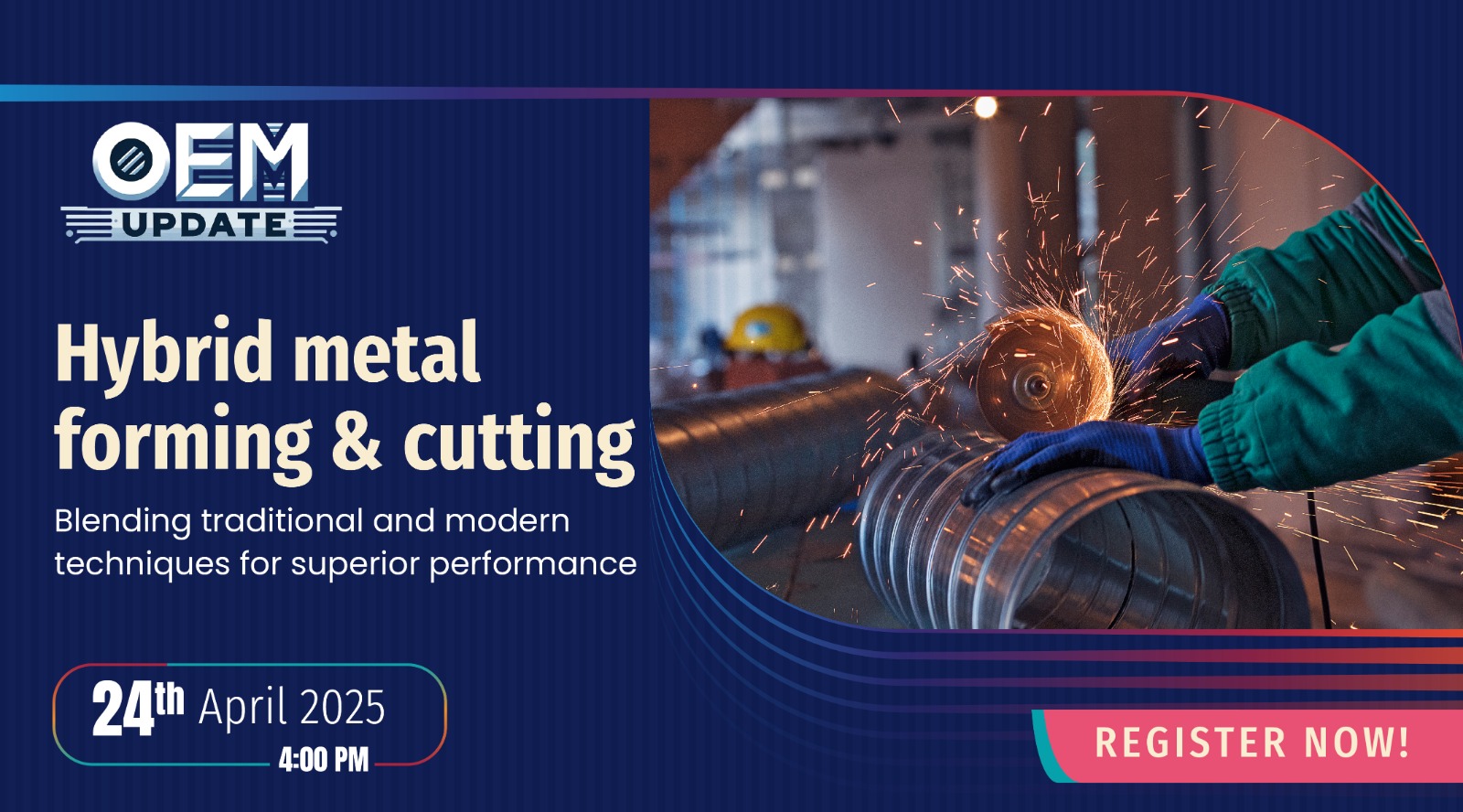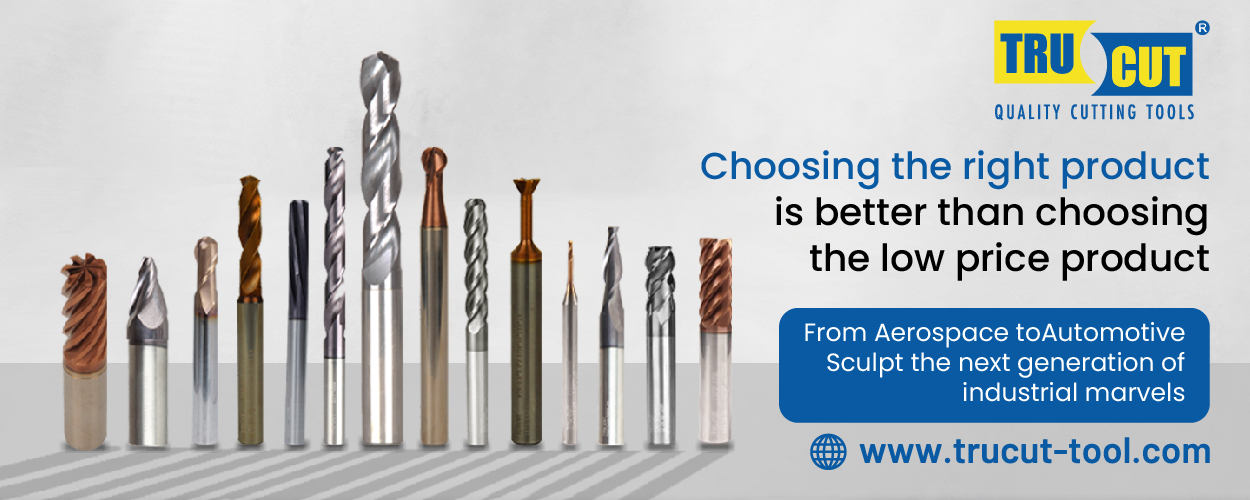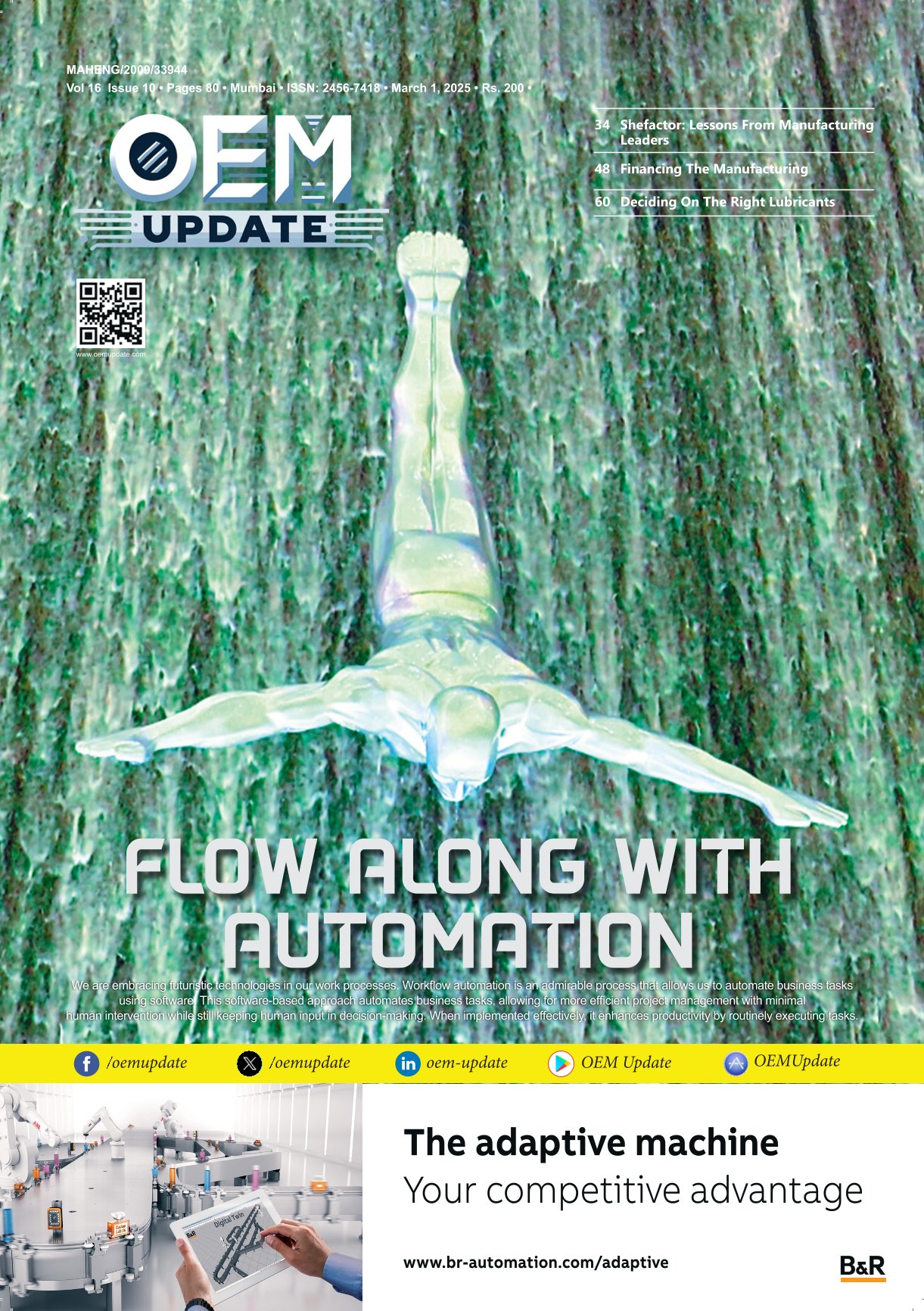Multi-Axis CNC Machining: What, Why and How?
May 14, 2018 1:54 pm
Multi-axis CNC machining offers practical solutions to your complex precision manufacturing needs.
Multi-axis CNC machining and their applications
Multi-axis CNC machining is a manufacturing process where tools can move in 4 or more ways/direction to manufacture parts which require precision machining, delivering innovative and efficient solutions for complex geometry parts. Multi-axis CNC machines can deliver the close tolerance components and offer greater flexibility and cutting-edge machining technology as it can process five sides of a part in a single setup. “The development and application of multi-axis technologies have completely transformed the metal machining industry, from the laborious practices of centuries past to the mass production of precise and high-tolerance parts and components in a cost-effective and time-efficient fashion,” acknowledges Himanshu P. Shaparia, Vice President – Sales, Jyoti CNC Automation Ltd, Rajkot.
Explaining the multi-axis CNC machining, T K Ramesh, CEO, Micromatic Machine Tools Pvt Ltd said, “CNC machining is the ability to produce precise components and intricate shapes based on geometry. Typically, standard CNC lathes have 2-axis and machining centres have 3-axis making them multi-axes machines. However, sophisticated machines have many more axes to produce complicated components with up to 14-axis. Computerised Numeric Controller (CNC) is where the computer instructs the machine movements with feedback in microns so that the control on material removal will be intricate, the finish will be better and accurate.”
Applications of multi-axis CNC machining
The proliferation of computerised control and multiple-axis technologies has revolutionised the metal machining industry. The components considered highly impractical earlier are now made possible through multi-axis CNC machining. Also, it offers single setup machining with significant reduction in overall machining time, increased part accuracy and optimised production of complex parts.
According to V. Anbu, Director General & CEO, Indian Machine Tool Manufacturers’ Association (IMTMA), “The primary applications of multi-axis CNC machining is to complete the entire machining in a single set up. The lead time for manufacturing is reduced drastically, since multiple operations are performed in the same machine. Multi-axis CNC machines are widely used in aerospace sector.”
Aerospace, aviation, automotive, defence, medical, energy – power and die-mould are major sectors where multi-axis machines find wide-spread applications.
“Intricate parts that need to be produced by multi-axis machine mostly come from aerospace, medical manufacturing, auto component manufacturing and more,” Ramesh adds.
How to achieve maximum efficiency out of a multi-axis CNC machine
When referred to multi-axis machining, efficiency could be perspective of the size, time and cost element. These machines offer great flexibility to adopt changes easily and economically. Extensive use of CAD-CAM software and capability of geometrical error compensation with high-end controller makes firm basis for efficient machining. Reduced human interference and incorporation of job probe and tool probe still chop down non-productive time for machining cycle. Multi-axis machines greatly help to reduce tool air movement which reduces non-cutting time at great extent. “Possibility of tilting of tool axis provides freedom for strategic toolpath and to practice higher cutting parameters with improved surface quality and productivity which boosts efficiency such features makes machines quite suitable for mass production of precise and high-tolerance parts and components in a cost-effective and time-efficient fashion,” opines Himanshu P. Shaparia of Jyoti CNC.
Talking about how to achieve maximum efficiency out of a multi-axis CNC machine, V. Anbu of IMTMA said, “With multi-axis CNC machines, one can reduce set-up times. It decreases the burden rate on machine tool operators as they need not have to re-fixture as many parts. Having decreased the number of set-ups, manufacturers can concentrate on machining complex systems in a single step. This in turn reduces the potential for operator errors and ensures accuracy of finished product.
Additionally, off-line programming, machine tool simulation during programming and pre-setting of cutting tools are some other means that can be adopted to improve the utilisation of machine tools.
According to T K Ramesh of Micromatic Machine Tools, to best the best effective output from CNC machines, it’s important to have:
• Thorough understanding of the machining process practical feel for machining and component dynamics.
• Good knowledge of programming and understanding of the component requirement.
• Also, long term practice of good upkeep of the machines and its proper use is also very important.
Advantages of 5-axis machining over 3-axis
Multi-axis machining centres represent a significant capital investment, however, their high throughput, ability to produce complex parts and high tolerance capability provide a sound return on investment. According to Shaparia, the major benefit of 5-axis machining is the ability to machine complex shapes in a single set-up. These machines offer: Lowered labour costs, reduction of scrap and wastages, mass production capabilities, significant reduction of overall machining time, capacity for continuous operation, high repeatability, increased production efficiency with increased part accuracy and high tolerances, flexibility to make changes easily and economically, multiple finish options, ability to work with shorter cutting tools, elimination of multiple setups, costly tooling and fixtures. Such features are major advantages of 5-axis machines over 3-axis machines.
Anbu explains that manufacturing industry stands to gain significantly in switching to 5-axis machines:
• The ability to machine complex shapes in a single mount. The single mount machining results in higher relative geometrical accuracy with respect to the datum reducing the number of machines and processes.
• More suitable for high precision complex machining components.
• Quick interface with IoT and Industry 4.0.
• These class of machines are also capable to manufacture slender components of any material.
• Although the investments are high, but it works out the cost to component reasonably.
“5-axis machines have the ability to make more complex parts than 3-axis machines. Both serve their own purposes based on the requirement, but the fact remains that over 60 per cent of the automotive industry’s production needs can fulfilled by 3-axis machines. Likewise, in aerospace, medical, and die and mould industries 5-axis machines are ideal,” Ramesh observes.
A few high precision machining solutions
Jyoti has a range of multi-axis machines in its product basket to fulfil the complex requirements in the various industry segments more specifically in the defence and aerospace, being the sunrise segment in India today. The company has recently updated the 5-axis series with new launches like the U Mill Series, KX Five nvu Series, Bridge type machining centers, MX Series and MTX300 being one of a kind multi-tasking machine. These are some of the latest offerings from Jyoti and we continue to focus in this segment as we have capability to offer these high precision machining solutions.
AMS, the principal company of Micromatic Machine Tools, recently launched a 5-axis machine, G670 5 AX which has five simultaneous axes with built-in rotary tables. This compact foot print machine is ergonomically designed for outstanding dynamic rigidity and rotary axes with direct driven tables.
Ace Designers are the exclusive manufacturers of CNC Sliding Headstock in India. This machine can be of twin spindle sliding head designed to bring in productivity. This is also a multi–axes machine having up to 5-axis and with up to 15 tools depending upon the component to be machines. The company is also in the process of developing a 7-axis machine, informs Ramesh.
The development and application of multi-axis technologies have completely transformed the metal machining industry.
Himanshu P. Shaparia, VP – Sales, Jyoti CNC Automation Ltd, Rajkot
With multi-axis CNC machines, one can reduce set-up times.
V. Anbu, Director General & CEO, IMTMA
5-axis machines have the ability to make more complex parts than 3-axis machines.
T K Ramesh, CEO, Micromatic Machine Tools Pvt Ltd
Cookie Consent
We use cookies to personalize your experience. By continuing to visit this website you agree to our Terms & Conditions, Privacy Policy and Cookie Policy.


















 English
English Hindi
Hindi